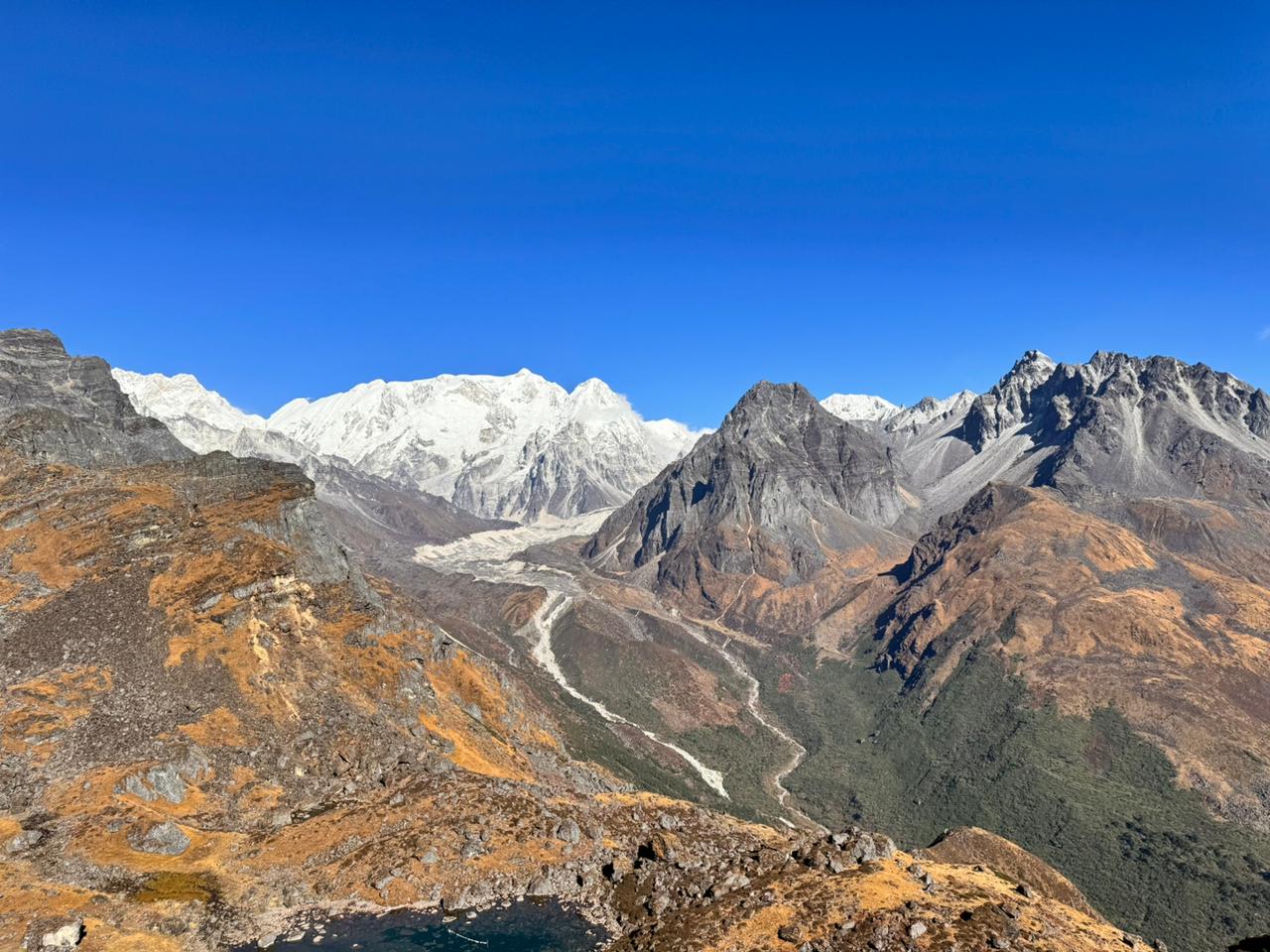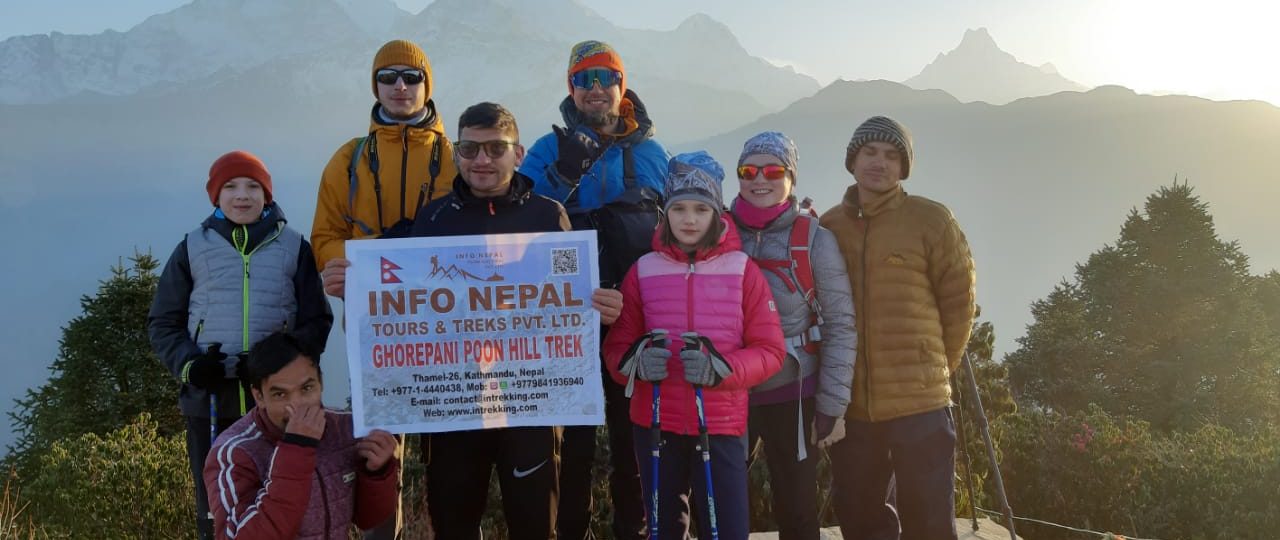
 Written By: Rajesh Neupane
Written By: Rajesh Neupane
Best Time For Kanchenjunga Trekking
Enquiry Form
Best Time For Kanchenjunga Trekking
Adventurers and lovers of the great outdoors will find their ideal location in the Himalayas with Kanchenjunga, the third-highest peak in the world. Three of the four summits that make up the peak’s massif are higher than 8,000 metres. At 8,586 metres, Kanchenjunga I is the highest peak.
Second place goes to Kanchenjunga West, which is 8,505 metres high. Kanchenjunga South, at 8494 metres, comes next. Finally, Kangbachen, at 7,903 metres, is the lowest. For adventure seekers, starting a trek to the stunning Kanchenjunga Base Camp is a dream come true.
This area provides the opportunity to fully experience Nepal’s rich cultural legacy in addition to offering spectacular scenery and breathtaking views of the mountains. Nonetheless, picking the ideal time for your excursion is essential to guaranteeing a secure and entertaining experience.
There are two main travel seasons on Nepal’s Himalayan trails: spring and autumn. Numerous isolated and difficult terrains on the Kanchenjunga Trek can be rather taxing. The difficult routes can be difficult to navigate, and trekkers risk becoming lost, ill, or injured. Therefore, choosing the ideal time to climb Mount Kanchenjunga becomes crucial.
Trek in Spring (March-May):
Trekking the Kanchenjunga in the spring is a wonderful experience. For your trekking trip, you’ll get to enjoy the nicest springtime weather and a steady climate. The trails leading to the destination have a lively and colourful atmosphere during the gorgeous season.
The area becomes a vivid panorama full of beautiful wildflowers and lush foliage as the winter snow melts. This period of weather is characterised by typically steady conditions, warmer temperatures, and bright skies that offer great views of the surrounding peaks and landscapes.
Trekking in this season allows you to set aside some time to take part in Nepal’s festivities. To mention a few: Tiji, Dumji, Ghode Jatra, Maha Shivaratri, Holi.
Level of Difficulty
The Kanchenjunga region experiences minimal rain or snowfall from March to May, making the trail route ideal for trekking. Anyone with a moderate fitness level can participate in the Kanchenjunga trek during this season and have a once-in-a-lifetime experience that is immensely rewarding.
Trek during Autumn (September-November):
An additional great season for the Kanchenjunga trip is the autumn, which runs from September to November. The best of nature is displayed in the landscapes during these months when they are at their most beautiful.
The post-monsoon season, which comes after the monsoon season, invigorates the surroundings as the rain clears the landscapes and leaves them feeling renewed and colourful.
Trekking is comfortable and pleasurable because of the excellent midday temperatures and the colder nighttime temperatures. Moreover, fall changes the scenery with a breathtaking show of colour.
With an array of red, orange, and gold leaves, the hillsides and woodlands spring to life, offering hikers a spiritual experience as well as a photographer’s dream come true. When there is no precipitation, snowfall, or cloud cover, there are fewer weather-related difficulties. Your paths won’t be muddy and slick because there haven’t been any significant downpours.
Level of Difficulty
The ideal time of year to go trekking and hiking in Nepal’s Himalayas, especially the Kanchenjunga region, is now. The Kanchenjunga hike is enjoyable for everyone who is determined and has a good level of fitness.
The third-highest peak in the world can be traversed in a lengthy, breathtaking, and delightful high-altitude walk. The summer monsoon and winter are the off-seasons for the Kanchenjunga Trek.
June through August sees the summer monsoon, which is very hot and muggy. You will bring with you a lot of rain and other weather-related difficulties during this season.
Winter season (December to March):
In the Kanchenjunga region, winters are bitterly cold. Because of the significant snowfall, teahouses in the alpine region are still closed. Because of the snow and slick ice, Selele Le Pass becomes impassable. Check-in is possible in Ghunsa; you will need to confirm the availability of lodging in Khambachen and Lhonak.
Because of the bitter cold and abundant snowfall in the winter, the trails are very difficult. Snowdrifts and slippery areas may be encountered by hikers, raising the possibility of slips and falls. Some places and passes may become impassable in the winter due to severe weather.
Hiking in the off-season is discouraged, but if you must, make sure you have the right equipment and preparation. There are several problems and discomforts you could experience. Nevertheless, you can hike in the off-season provided you adequately plan for it.
Nonetheless, during this time of year, you may experience the following celebrations and events in Nepal: Losar, and Maghe Sankranti.
Level of Difficulty
The Kanchenjunga trekking trail becomes slick and unsuitable for trekking due to heavy snowfall. To combat the fresh snow, you’ll need winter shoes, crampons, and gaiters before starting the Kanchenjunga Base Camp Trek.
You need to pack appropriately, including thermal pants, body suits and headgear. During these months, trekkers are scarcely to be found on the Kanchenjunga trekking trail.
Monsoon: A Wet and Humid Season
The monsoon season, which lasts from June to August, is humid and produces a lot of rain. In addition to the potential for landslides, there will be a lot of bothersome and potentially harmful leeches.
The view is obstructed by the thick clouds over the peak. But everything will get cleaned up and polished. Trekking to the Kanchenjunga region is not recommended during the rainy season.
The following celebrations and events can be experienced in Nepal if you are interested in trekking to Kanchenjunga during this time of year: Gai Jatra and Janai Purnima/Rakshya Bandhan.
Level of Difficulty
It is challenging and perhaps unsafe to hike the wet and slick hiking route. The journey is difficult while leaving landslides, and fresh landslides can occur at any time. For the trail route to Khambachen and Ghunsa, Torongding, and Sherpaguan, we need to be updated often. Ask around and be ready for these areas that are prone to landslides.
Final Say
The timing is crucial. While Kanchenjunga is a stunning location for trekking, there are unique difficulties in every season. Although they might get congested, the best time for kanchenjunga trekking is spring and autumn season. Although they can be more difficult, the monsoon and winter months are less busy.
Whichever season you decide on, you should be ready for the trials ahead. During monsoon, there may be less visibility and mud and slick pathways. Wintertime brings with it the possibility of ice pathways and extremely low temperatures.
FAQs:
Kanchenjunga: Is it challenging?
Out of all the 8000ers, climbing Kanchenjunga to the summit from the last camp is the hardest and takes the longest. At 9.00-10.00 pm, climbers leave Camp IV to ascend Mt. Kanchenjunga, the highest peak in the 8000m range, which stands at 1036m.
Is a porter required for the trek?
It is highly recommended that you hire a porter for the trek unless you are an extremely experienced hiker. You won’t have to worry about your rucksack, so you can unwind and enjoy the walk. The porter’s maximum weight, with his 3–4 kg load, is 20 kg.
What medication is available to avoid altitude sickness?
The majority of hikers in the high Himalayas can cross mountain passes and return without the need for supplementary medication. However, Diamox is frequently advised if you are taking any drugs to help with acclimatization.
Then, before departing for the start of the journey, you must notify your guide in Kathmandu. The benefits and drawbacks of using this drug will next be covered, with special attention to when to start taking it and how long to take it.
Where do I go to exchange money?
The rupee is the official currency of Nepal. You may convert your foreign currency into Nepalese rupees at several money exchangers located across the city.
The currency rates at hotels, travel agencies, banks, and money changers vary slightly. Additionally, exchange rates will differ throughout bank locations.